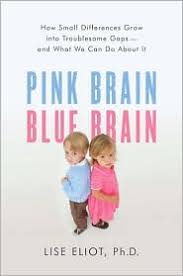Recently, the Barbie.com website became a polling place where participants could vote on what the legendary doll’s next career move should be. Toymakers at Mattel offered five choices for its new “I Can Be” Barbie: architect, anchorwoman, computer engineer, environmentalist, and surgeon. Girls overwhelmingly favored the “News Anchor Barbie”—whose glamorous get-up (tulip skirt, pink velvet jacket, black camisole, high heels, and cordless microphone) draws more inspiration from American Idol than it does from Katie Couric’s nightly wardrobe. I didn’t see Surgeon Barbie’s proposed garb, but I’d bet that her lab coat lacked a certain glitz factor. Of the five career options, anchorwoman fits most snugly within the media-and-entertainment realm that saturates kids’ fantasy lives. Newscaster Barbie’s popularity among girls is hardly a shocker.
In a surprising twist, however, the computer engineer beat the anchorwoman in the popular vote. But it wasn’t because girls vouched for her. Rather, a vocal group of adult female computer engineers launched an online campaign to lure voters—parents included—to elect the leggy lady with the pink laptop. “Please help us in getting Barbie to get her Geek on!” they appealed. Their campaign worked.
Mattel did its best to glam-up Engineer Barbie’s attire, which includes “geek-chic glasses,” black leggings, a Bluetooth headset, and sporty yet sensible pink shoes. But while real-life girls love electronic gadgets, most don’t seem to aspire to high-tech careers themselves. Or, at least, they don’t take a shine to a doll that does.
In the end, Mattel decided to play to both constituencies, and announced plans to manufacture the top two winners in the coming months. But let’s take a step back for a minute. Does it really matter what career path Barbie takes? Do toys really influence girls’ future aspirations? Clearly, women engineering professionals think they can. According to Ann Zimmerman of the Wall Street Journal (who reported in the April 9, 2010 issue): “Why grown women felt so strongly about having themselves represented by a doll—especially onethat feminists have always loathed—speaks volumes both about the power of the iconic Barbie doll and the current state of women who work in computer and information sciences. Their ranks have declined in the past two decades. In 2008, women received only 18% of computer science degrees, down from 37% in 1985, according to the National Center for Women & Information Technology.”
In the early 1970s, when role models for girls in male-dominated professions were sorely lacking, proponents of gender equality successfully lobbied toy makers and educational publishers to design products depicting diverse career options for girls. They strongly believed that early play experiences would make a difference in kids’ future aspirations. So they worked actively to shape the material culture of childhood.
Back then, Barbie was so anathema to feminists that it would never have occurred to them to collaborate with Mattel. But times have changed. Over the past three decades, commercial toymakers have perfected their absorption and co-optation of liberal feminist ideals; Barbie’s latest career makeover is just one recent example. So today, many women’s groups are apt to adopt the strategy: “if you can’t beat ‘em, join ‘em.” We can interpret these Barbie dolls as “compromise formations” (to use an old grad-school phrase) because they represent an uneasy combination of traditionally feminine beauty standards with forward-thinking advocacy to enhance women’s economic and professional status.
With these Barbie dolls in our daughters’ playrooms, are we on solid footing, or shaky ground? Will the new Computer Engineer Barbie help reverse the decline of women in high-tech careers? We don’t know. But real surgeons—and I’d bet most computer programmers—don’t wear stilettos to the workplace. It’s too bad that Barbie dolls still have to.



